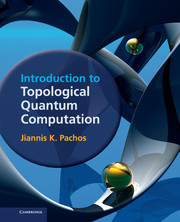6 - Kitaev's honeycomb lattice model
from Part II - Topological models
Published online by Cambridge University Press: 05 August 2012
Summary
In this chapter, we consider Kitaev's honeycomb lattice model (Kitaev, 2006). This is an analytically tractable spin model that gives rise to quasiparticles with Abelian as well as non-Abelian statistics. Some of its properties are similar to the fractional quantum Hall effect, which has been studied experimentally in great detail even though it evades exact analytical treatment (Moore and Read, 1991). Due to its simplicity, the honeycomb lattice model is likely to be the first topological spin model to be realised in the laboratory, e.g., with optical lattice technology (Micheli et al., 2006). Understanding its properties can facilitate its physical realisation and can provide a useful insight into the mechanisms underlining topological insulators and the fractional quantum Hall effect.
The honeycomb lattice model comprises interacting spin-½ particles arranged on the sites of a honeycomb lattice. It is remarkable that such a simple model can support a rich variety of topological behaviours. For certain values of its couplings, Abelian anyons emerge that behave like the toric code anyons. For another coupling regime, non-Abelian anyons emerge that correspond to the Ising anyons. The latter are manifested as vortex-like configurations of the original spin model that can effectively be described by Majorana fermions. These are fermionic fields that are antiparticles of themselves. They were first introduced in the context of high-energy physics (Majorana, 1937) and become increasingly important in the analysis of solid state phenomena (Wilczek, 2009).
Information
- Type
- Chapter
- Information
- Introduction to Topological Quantum Computation , pp. 102 - 128Publisher: Cambridge University PressPrint publication year: 2012
